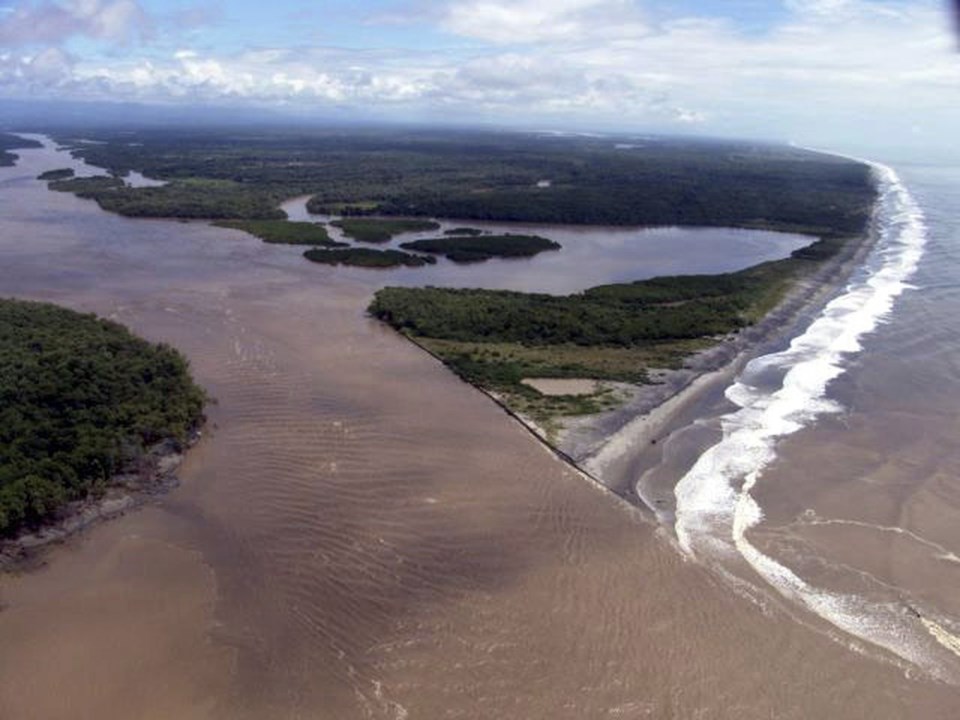SAN SALVADOR, El Salvador (AP) — One of Central America’s longest rivers will be the primary beneficiary of El Salvador’s deal to refinance $1 billion of debt with support from the U.S. government amid a resurgence in so-called debt-for-nature swaps.
In the deal announced by both governments this week, El Salvador committed the $350 million it will save to conservation projects benefiting the Lempa River, which provides two-thirds of the country’s water supply.
Jorge Oviedo of the non-governmental organization Environmental Investment Fund of El Salvador, said the agreement would “improve people’s lives and support the climate resilience that we need as Salvadorans.” His organization will partner with Catholic Relief Services to manage the program.
The Lempa River’s headwaters are in Guatemala and it flows through Honduras en route to El Salvador where it empties into the Pacific Ocean.
“I describe it as the heart and lungs of the country,” said the Catholic Relief Services' Paul Hicks, interim program director for the Rio Lempa Conservation and Restoration Program. The Lempa provides not only drinking water, but also hydroelectric power, as well as water for agriculture and industry.
The river’s watershed is threatened by deforestation and unsustainable agricultural practices, Hicks said. Some of the tributaries have gone dry from too much water being diverted and very little of the water used for industry or sanitation is treated.
Debt-for-nature swaps
Debt-for-nature swaps have been around for 40 years but have garnered more attention recently as their scale grows.
They started in the 1980s during the Latin American debt crisis as an attempt to steer resources from strapped governments toward primarily rainforest protection. But they were relatively small and not closely monitored.
Last year, Ecuador pulled off a deal with U.S. support to generate $323 million to finance conservation projects around the Galapagos Marine Reserve.
Earlier generations of the swaps focused on lending countries like the United States or European nations forgiving loans they had made in the developing world. More recently, the focus has shifted to those developing countries’ private debt, which has ballooned since the COVID-19 pandemic and the higher interest rates that followed as countries tried to beat back global inflation.
El Salvador’s deal is essentially a refinancing of a portion of its debt. The savings earned through that maneuver is what the country has committed to spending on conservation of the Lempa River.
“From a financial perspective, they (the swaps) haven’t been significant in the past, and that is a big part of why they kind of fell out of favor,” said Elizabeth Losos of the Nicholas Institute for Energy, Environment & Sustainability at Duke University. They were challenging to negotiate and the impact on a country’s finances wasn’t always big enough to justify the effort.
“But these new rounds are really at a level that are much more significant,” she said. “It’s not the whole El Salvadorean debt, but now it’s actually a chunk of it.”
“You’ve figured out a way to help them out by reducing the amount of money that they’re having to pay and shifting it over to something that everybody agrees would be a good thing,” Losos said.
To be successful, Losos recommends that real outcomes and targets be outlined and payments be made contingent on reaching those goals. Earlier generations of such swaps suffered from a lack of monitoring.
Water security
While Catholic Relief Services is not known as a major environmental conservation organization, Hicks said it has a long history of working on projects related to water security in El Salvador. Those include with the U.S. International Development Finance Corporation, whose support for this deal made the refinancing possible.
A goal is to have a comprehensive watershed plan for the Lempa River in two years. The program will officially launch next year when they start awarding project grants, Hicks said.
The commitment builds on El Salvador’s groundbreaking ban on metals mining in 2017, done largely to protect its water resources.
El Salvador President Nayib Bukele hailed the agreement earlier this week as the most ambitious environmental action in the country’s history.
Marcos Alemán And Christopher Sherman, The Associated Press




